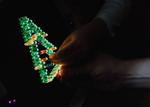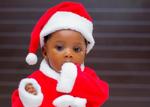’Tis the season to be jolly—and to spend a lot of money bringing cheer to your loved ones. Holiday retail sales in 2021 are expected to be somewhere between $843.4 billion and $859 billion—an increase between 8.5% and 10.5% over sales over 2020, according to the National Retail Federation (NRF). The average consumer, the NRF found, will spend about $998 in the holiday season between gifts, food, decorations, and other holiday-related purchases.
Being inundated with all the bells and whistles of ads and wish lists can make it hard to suss out which toys are most appropriate for children's gifts. And while adults may disagree on budget, wastefulness, or exactly how many L.O.L. dolls one child truly needs, we can all agree that safety is the baseline.
To that end, Stacker used a variety of holiday and safety resources to compile a list of 15 tips for holiday toy safety. Our list is not about toy recalls, per se; although we tell you where to check for toys that should not be on your list. We curated the top tips for not only toys, but ancillary items you may not consider dangerous such as batteries, decorations, and wrapping.
In a 2020 report issued by the U.S. Consumer Product Safety Commission, it was noted that nearly 150,000 children were treated for toy-related injuries in hospital emergency departments in the United States. We hope that you take a few minutes to click through our slideshow and read the tips to keep your child safe this holiday season. Whether you are purchasing a toy or device, reviewing instructions on how to assemble or use a toy, or selecting decorations, please be safe
Purchase age-appropriate toys

Take a moment to read the age level of the toy you are buying. The American Academy of Pediatrics notes the importance when buying toys to not only look at the age level but also be aware that the toys match the ability, skill, and interest level of your child. Advanced toys may frustrate your child and/or pose safety hazards when in the hands of younger children.
Ensure children ride safely

Whether you buy your child a bike, toy car, or scooter, be sure they are riding in a safe place and wearing proper equipment. Helmets are essential when children are riding bikes, scooters, Segways, and other objects where their heads need protecting.
Check for toy recalls

Choose toys to bolster development for babies and toddlers
Look for labeling that says ‘non-toxic’
Avoid toys with small pieces for young children
Carefully read all labels and instructions
Know the purpose of digital devices
Beware of strings and ribbons
Use protective eyewear with sports equipment

Be sure to give children the appropriate protective eyewear with polycarbonate lenses (which are less likely to shatter). Check in with your child’s ophthalmologist to get educated about protective gear recommendations for the specific sport your child is playing.
Supervise young children

While the holidays can be a busy and stressful time of the year, it is important to keep your eyes on your young child—especially when they are playing with a new toy. Take extra precaution when they are playing with toys or games that may cause an eye injury (think: toys that launch/shoot objects).
No balloons

If there are small children on your party list, forego the balloons this year from your holiday decor or games. The U.S. Consumer Product Safety Commission cautions about the potential suffocation hazard by uninflated toy balloons and broken balloon pieces.
Nix the noisy toys for toddlers

Did you know that toys designed for infants and toddlers may cause hearing damage because of the volume? Young children are particularly at risk as they hold objects close to their ears and face. Listen to the product before you buy it and make modifications such as adding tape over the speaker or removing the batteries.












No comments:
Post a Comment